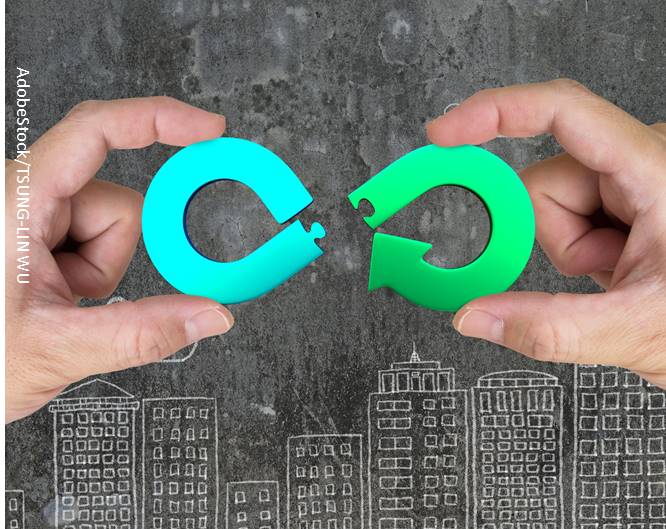N³: Ihr Partner für Nachhaltigkeitsstrategien
Machen Sie Ihr Unternehmen zukunftssicher
Die N³ Nachhaltigkeitsberatung Dr. Friege & Partner unterstützt Sie dabei, Ihre Nachhaltigkeitsziele zu erarbeiten und umzusetzen. Wir analysieren gemeinsam mit Ihnen den Status quo und entwerfen ein Konzept für die Zukunft. Mit mehr als 20 Jahren Erfahrung im Bereich Nachhaltigkeit im unternehmerischen Kontext beraten und unterstützen wir Sie auch bei der Entwicklung der Nachhaltigkeitsstrategie und der CSR-Berichterstattung. Unsere Beratungsleistungen werden individuell auf Ihre Branche und Ihr Unternehmen zugeschnitten.
Referenzen unserer Kunden und Partner

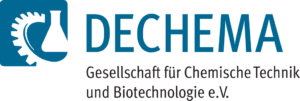

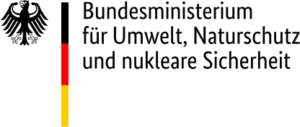




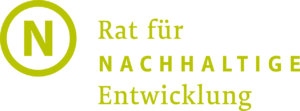



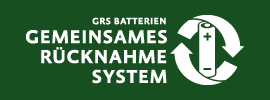




Nachhaltigkeit im Fokus:
Neuigkeiten, Projekte und Veröffentlichungen von N³
CSR-Richtlinie: Wir unterstützen Sie bei der Umsetzung
Haben Sie Fragen an uns?
Nehmen Sie Kontakt zu uns auf: info@N-hoch-drei.de
Wir freuen uns darauf, Sie kennenzulernen.
N³: Ist Ihr Partner für Ressourcenmanagement, Innovations-Transfer, Sustainable Chemistry, Energie-Sektorenkopplung...
Die Partner von N³ bringen 150 Jahre Berufserfahrung und Kenntnisse aus zahlreichen Führungspositionen in Unternehmen und öffentlichen Institutionen in die Beratung ein. Dies zeigt sich in der erfolgreichen Arbeit des Unternehmens seit seiner Gründung im Jahr 2014 an vielen Projekten, häufig an Schnittstellen zwischen Wirtschaft, Politik und Wissenschaft.
RESSOURCENMANAGEMENT ist für uns eine Aufgabe im Spannungsfeld zwischen dem Zugriff auf notwendige Ressourcen, ihrem effizienten Einsatz, der Qualität von Sekundärrohstoffen und dem mit Gewinnung oder Recycling verbundenen Energieeinsatz. Felder, in denen wir aktiv sind: Nexus Abfall-Ressourcen-Klima, effiziente Verwertung von Abfällen, mikrobiologisches Recycling und Verwertung von organischen Abfällen sowie Geschäftsmodelle in der „Circular Economy“ und „Bioeconomy“.
ZIRKULÄRE ÖKONOMIE ist einer der rasant an Bedeutung gewinnenden Ansätze, Lösungen für die Anforderungen aus Umwelt-, Klimaschutz und zunehmender Knappheit wichtiger Ressourcen zu entwickeln. Nutzen Sie unsere Expertise hierzu und loten Sie gemeinsam mit uns die Möglichkeiten Ihres Unternehmens aus, tragfähige Lösungen zu entwickeln und davon zu profitieren.
INNOVATIONS-TRANSFER ist eine unserer Kernkompetenzen. Wir unterstützen Unternehmen dabei, Innovationen in ihrem Kontext zu identifizieren und erfolgreich zu übertragen. Dazu nutzen wir unser breites Netzwerk und unsere langjährige Erfahrung in verschiedenen Branchen. Wir helfen unseren Kunden dabei, neue Ideen und Technologien zu erschließen und so ihre Wettbewerbsfähigkeit zu stärken. Dabei legen wir großen Wert auf eine individuelle Beratung und eine maßgeschneiderte Lösung. Unsere Expertise im Bereich Innovations-Transfer ermöglicht es unseren Kunden, schneller auf Veränderungen im Markt zu reagieren und neue Chancen zu nutzen.
SUSTAINABLE CHEMISTRY – NACHHALTIGE CHEMIE heißt nicht nur, den Einsatz kritischer Stoffe zu vermeiden, sondern mit Unterstützung von Innovationen im Bereich Rohstoffe, Prozesse, Materialien und Anwendungsstrategien wesentliche Beiträge zur Transformation in eine nachhaltig wirtschaftende Gesellschaft. Felder, in denen wir aktiv sind: Internationales Chemikalienmanagement, Studien und Fachgespräche zum Einsatz von Chemikalien im Baubereich, Rückgewinnung und nachhaltiger Umgang mit Nährstoffen, Entwicklung und Bewertung von Bioprozessen.
ENERGIEWIRTSCHAFT DER ZUKUNFT – SEKTORKOPPLUNG sind Themen, denen wir uns mit großem Engagement seit vielen Jahren widmen. Die aus Gründen des Umwelt- und Klimaschutzes notwendige Ablösung der Verbrennung der fossilen Energieträger Erdöl, Erdgas und Kohle durch Erneuerbare Energien ist eine riesige Herausforderung für Technik und Wirtschaft. Strom und Wasserstoff als vielfältig einsetzbare Energien verbinden zunehmend die in der Vergangenheit voneinander getrennten Energieverbrauchs- und Erzeugungssektoren. Immer mehr dezentrale Energieerzeugung, Elektromobilität und der weiter abnehmende Wärmebedarf von Gebäuden fordern neue intelligente Lösungen für Steuerung und Betrieb der Netze. Die zunehmende Komplexität des Gesamtsystems macht es gleichzeitig notwendig, immer größere Datenmengen zu Netzzuständen und Energienutzung in Echtzeit zu verarbeiten. Wir unterstützen Sie beim Ausloten Ihrer spezifischen Möglichkeiten und Ihrer daraus zu entwickelnden individuellen Strategien.
Verabreden Sie einen Gesprächstermin mit uns:
Mail an info@n-hoch-drei.de oder Telefon: +49 2855 3037311
Unser Engagement im Deutschen Nachhaltigkeitskodex
Wir haben eine Entsprechenserklärung zum Deutschen Nachhaltigkeitskodex (DNK) abgegeben und an Schulungen für DNK-Partner teilgenommen. Der DNK bietet eine vergleichsweise einfache Möglichkeit, über nicht-finanzielle Leistungen zu berichten. Der DNK kann von Organisationen und Unternehmen jeder Größe und Rechtsform genutzt werden.
Unternehmensverantwortung: Nachhaltigkeit als Garant für Umweltschutz und wirtschaftlichen Erfolg
Corporate Social Responsibility (CSR) ist für viele Unternehmen längst mehr als ein Marketingbegriff. Angesichts des Klimawandels spielen Energieversorgung und Umweltschutz für immer mehr Betriebe eine Rolle im Alltag. Ökologisch effizientere Produktion und Produkte, Verringerung von Material- und Energieeinsatz, Nutzung von Rezyklaten, Umstieg auf nachwachsende Rohstoffe – das sind Maßnahmen, mit denen vielfach wirtschaftliche Vorteile generiert werden können. Sie handeln damit pro-aktiv, gesellschaftlich verantwortungsbewusst und antizipieren kommende gesetzliche Anforderungen auf nationaler und europäischer Ebene.
Unsere Erfahrungen mit der Entwicklung von Nachhaltigkeits-Strategien für Organisationen und Unternehmen unterschiedlicher Größe zeigen mittelfristige ökonomische Vorteile. Außerdem ist eine für das Unternehmen spezifisch entwickelte Nachhaltigkeitsstrategie die beste Voraussetzung, um die in den kommenden Jahren strenger werdenden Anforderungen an Nachhaltigkeitsberichte (CSR-Richtlinie) zu erfüllen. Wir beraten Sie gerne dazu und unterstützen Sie bei der Entwicklung eines geeigneten Monitoring-Systems.
N³: Wir unterstützen Sie bei der Strategieentwicklung
Wir haben mehr als 20 Jahre Erfahrung mit der Beratung zu Nachhaltigkeit im unternehmerischen Kontext.
Wir analysieren für Sie den Status quo und entwerfen mit Ihnen gemeinsam ein Konzept für die Zukunft. Unabhängig davon, ob Sie bei der Entwicklung Ihrer Nachhaltigkeitsstrategie noch ganz am Anfang stehen oder Verbesserungspotenzial bei vorhandenen Zielvorgaben generieren wollen.
Individuelle, auf Ihre Branche zugeschnittene Lösungen und Beratungsleistungen
Zusätzlich unterstützen wir Sie selbstverständlich gerne auch im Rahmen ausführlicher Beratungen zu den Themen CSR-Strategie und nachhaltige Ressourcenplanung. Mit Blick auf Ihre spezifische Branche und die Lage in Ihrem Unternehmen informieren wir Sie über die Zusammenhänge von Ressourcenkreisläufen, Energiemanagement und Klimaschutz. Wir denken Aspekte wie Logistik, Energie und Ressourcen als eine gemeinsame Einheit und können so vollständige, individuelle Lösungen für Ihren Bedarf entwickeln.
Besonderes Augenmerk legen wir dabei auf die Ausrichtung an den wirtschaftlichen Rahmenbedingungen Ihres Unternehmens. Auch deshalb ist die eingehende Beratung mit Ihnen und den Mitarbeitern in den betreffenden Fachabteilungen für uns so wichtig. Wir sind davon überzeugt, dass soziale und ökologische Verantwortung zu übernehmen für die meisten Unternehmen nicht zuletzt wirtschaftlich sinnvoll ist. Nicht nur, weil Sie damit Ressourcen in Produktions- und Logistikprozessen einsparen, sondern auch, weil Sie als Arbeitgeber und für Ihre Kunden attraktiver werden. Doch damit das funktioniert, müssen Prozesse häufig schrittweise umgestellt werden. Wir begleiten Sie auf diesem Weg.
Expertise und Kompetenzen von N³
Die Partner von N³ bringen 150 Jahre Berufserfahrung mit. N³ ist seit fast zehn Jahren erfolgreich unterwegs und arbeitet mit renommierten Instituten, Ingenieurbüros und Kanzleien zusammen. Hier ein Ausschnitt aus unserem Auftrags-Portfolio:
- Nationale Bodenschutzstrategie (Auftraggeber: Umweltbundesamt)
- Vorbereitung der Gründung des International Sustainable Chemistry Cooperative Center / ISC3
- Beurteilung der Entwicklung eines kommunalen Entsorgungsunternehmens (Auftraggeber: RES Recycling- und Entsorgungsservice Sangerhausen GmbH)
- Nachhaltigkeitsentwicklung in einem Verkehrsunternehmen (Auftraggeber: Rheinbahn AG)
- Bin2Bean – Innovations for soil improvement from bio-waste (von der EU im Rahmen von HORIZON gefördert)
- Nachhaltigkeitskommunikation in der Abfallwirtschaft – Grundlagen und best practice-Ansätze (Gefördert durch die Deutsche Bundesstiftung Umwelt)
- Nachhaltigkeitsbewertung und Innovations-Transfer beim FONA-Vorhaben ReziProK (Auftraggeber: DECHEMA)
- Sichere Sammlung und Lagerung von Hochenergie-Batterien auf Wertstoffhöfen (Auftraggeber: Stiftung GRS Altbatterien)
- Analyse des Siedlungsabfalls und Empfehlungen für einen Abfallwirtschaftsplan in Cape Coast / Ghana (Auftraggeber: Bundesstadt Bonn)
- Ressourcenmanagement und Siedlungsabfallwirtschaft – Challenger Report im Auftrag des Deutschen Rats für Nachhaltige Entwicklung
- Grundlagen für „Urban Mining“ in einer Großstadt (Auftraggeber: bonnorange AöR)
- Wissenschaftliche Begleitung und Organisation von Fachkonferenzen für nachhaltige Entwicklung (8th Global Nitrogen Conference, European Resources Forum,…)
- Beyond 2020: Sustainable Chemistry as orientation and pace maker for Sound
- Management of Chemicals and Waste (Auftraggeber: Umweltbundesamt)
| Anforderungen / Ziele | Ressourcen |
|---|---|
| Sie wollen Ihr Unternehmen zukunftssicher aufstellen? | Sie benötigen einen Überblick für Sammlung, Verwertung oder Wiedernutzbarmachung wichtiger Ressourcen? |
| Sie haben Pläne für nachhaltige Unternehmensführung, brauchen aber noch professionellen Rat bei der Umsetzung? | Sie wollen die Ressourcen- und Energieeffizienz im Unternehmen steigern? |
| Sie wollen einen Nachhaltigkeitsbericht erstellen oder an die neuen CSR-Vorgaben anpassen? | Sie benötigen Hilfe bei der Untersuchung von Möglichkeiten, ressourcensparendes Produktdesign, Recyclingtechnik und bedarfsgerechte Logistik kostengünstig zu optimieren? |
Anforderungen / Ziele
- Sie wollen Ihr Unternehmen zukunftssicher aufstellen?
- Sie haben Pläne für nachhaltige Unternehmensführung, brauchen aber noch professionellen Rat bei der Umsetzung?
- Sie wollen einen Nachhaltigkeitsbericht erstellen oder an die neuen CSR-Vorgaben anpassen?
Dann wenden Sie sich an uns. Wir sind überzeugt, dass Denken und Handeln in den Dimensionen der Nachhaltigkeit Bestandteil jeder zukunftsorientierten Strategie von Unternehmen und öffentlichen Einrichtungen sein muss und sein wird.
Ressourcen
- Sie benötigen einen Überblick für Sammlung, Verwertung oder Wiedernutzbarmachung wichtiger Ressourcen?
- Sie wollen die Ressourcen- und Energieeffizienz im Unternehmen steigern?
- Sie benötigen Hilfe bei der Untersuchung von Möglichkeiten, ressourcensparendes Produktdesign, Recyclingtechnik und bedarfsgerechte Logistik kostengünstig zu optimieren?
Dann wenden Sie sich an uns. Die ganzheitliche Betrachtung Ihres Ressourcen- und Energiemanagements bietet angesichts zunehmend sich weiter entwickelnder Sektorenkopplung große Chancen.
Erfahrene Berater für Ihren Erfolg: N³ bringt Führungserfahrungen und interdisziplinäres Wissen zusammen
Wir arbeiten inter- und transdisziplinär. Unser Hintergrund sind eigene Erfahrungen in der Führung von Unternehmen und öffentlichen Einrichtungen. Dies ist unsere Basis für kreative und zuverlässige Beratung.
Setzen Sie auf N³!
Dr. Friege & Partner Wirtschafts- und Naturwissenschaftler
